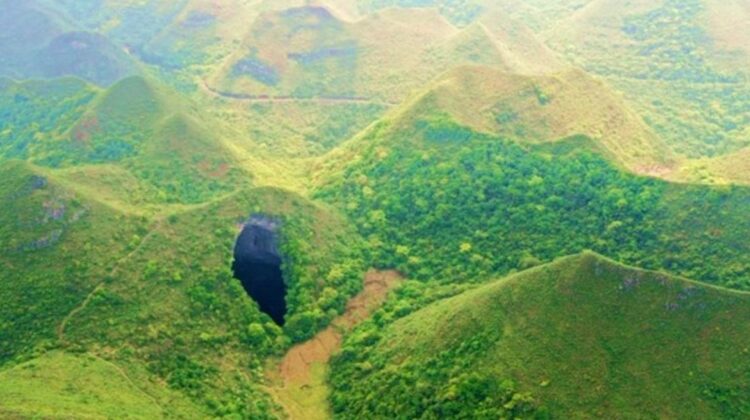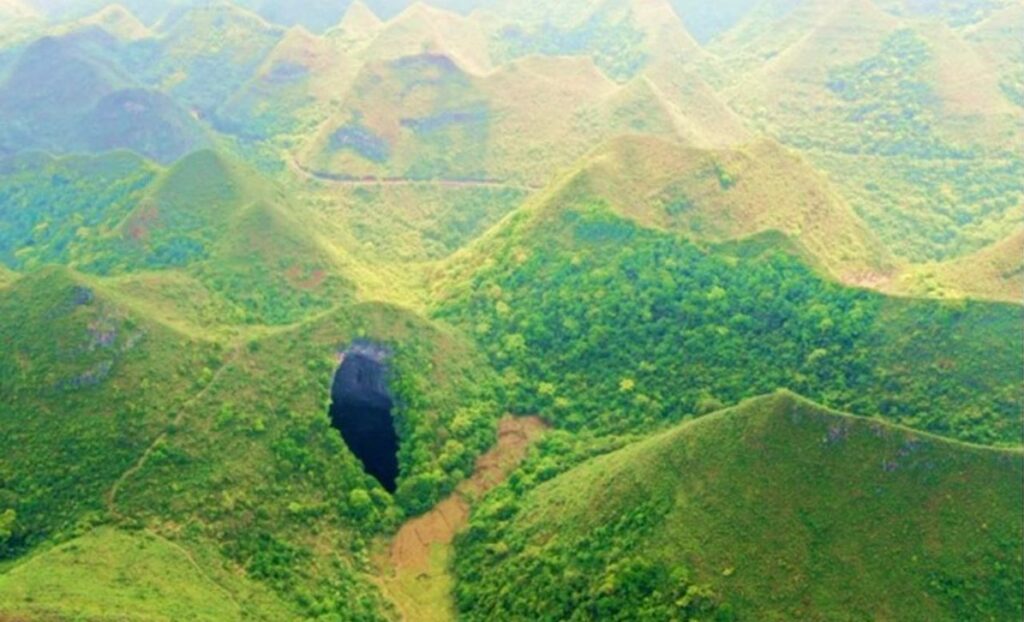
In a remarkable discovery, Chinese scientists have stumbled upon an ancient lost world within an astonishingly deep and expansive sinkhole in southern China, with expectations of encountering previously unknown flora and fauna that have eluded scientific exploration.

Located near Ping’e village in the Leye district of Guangxi, China, the colossal sinkhole has drawn significant attention. According to reports from Ancient Origins, this newly unveiled subterranean realm is estimated to be a staggering 192 meters deep, 306 meters long, and 150 meters wide.
Such distinctive geological formations are typically formed by the erosion of soluble layers, including gypsum and limestone, by flowing groundwater. Chinese locals sometimes refer to these structures as “heavenly pits,” and it is easy to understand why given their awe-inspiring nature.
This particular sinkhole represents one of the largest of its kind globally. While numerous sinkholes worldwide are characterized by water-filled cavities, with Mexico’s famed “Sinkhole Paradise” being a prominent example, the Chinese discovery presents a verdant oasis where trees soar to heights of up to 40 meters (approximately 130 feet).

Chen Lixin, the expedition leader and researcher, reveals that the cave harbors species that have never been documented or described in the scientific realm. The magnitude of this find excites scientists worldwide who eagerly await data on these potential newly discovered organisms. Notably, Chinese botanists, spearheading efforts to combat desertification through tree planting, are particularly interested in these findings. In the past, their endeavors were hindered by selecting plants that consumed excessive amounts of water. However, the existence of ancient plants thriving in these extraordinary environments could hold the key to addressing this ecological challenge.

Zhang Yuanhai, a senior engineer from the Karst Institute of Geology and a member of the research team, describes the bottom of the sinkhole as an “another world.” Such evocative language reflects the sense of exploration and wonder that accompanies this groundbreaking scientific endeavor.
As the scientific community eagerly awaits further revelations from this hidden ecosystem, the discovery serves as a reminder that our planet still conceals mysteries and untrodden paths waiting to be explored. The vast sinkhole in China provides a glimpse into a primeval world that has remained untouched by human intervention. By unraveling the secrets of this lost world, we not only expand our understanding of the planet’s biodiversity but also gain insights that may contribute to the preservation and restoration of fragile ecosystems.

Leave a Reply